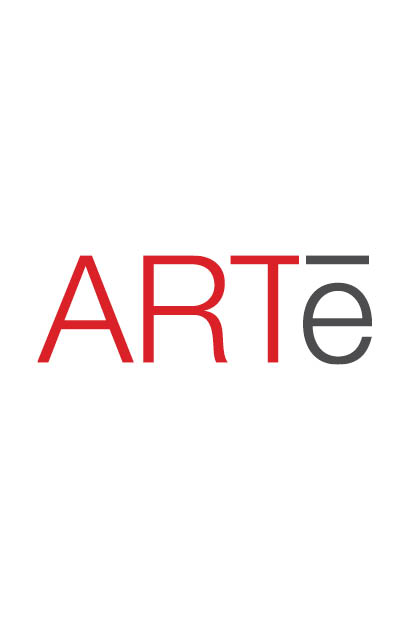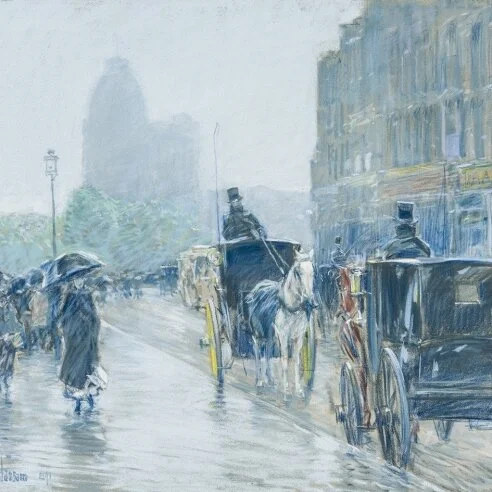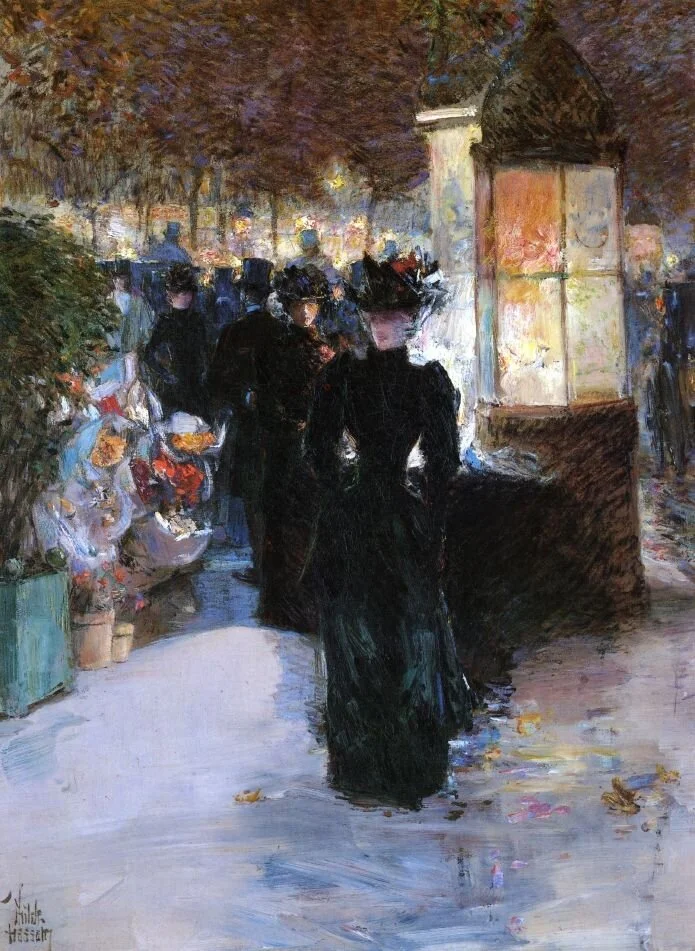Frederick Childe Hassam • American (1859-1935)
Bleak House, Broadstairs C: 1889 • Watercolor on Paper 13-1/2” x 9-3/4”
Frederick Childe Hassam was a contrarian whose fate was cast in flames. His father manufactured cutlery in a building on Washington Street in downtown Boston, almost next door to the historic Old South Meetinghouse. As firemen frantically worked to save Old South. Hassam Brothers became one of the last buildings lost to the inferno. If the business had survived, Childe would have spent the rest of his life making razors and supplying the U.S. Army with bayonets. Instead, he had to go to work to help support the family. His father found him a job in the accounting department of book publisher, Little Brown & Company. There he quickly displayed such a poor aptitude for numbers, his father finally relented allowing him to pursue life as an artist. For the rest of his life, Childe displayed prodigious work habits and a refusal to follow the paths others set for him.
Formal training was not his thing. With innate talent and a few courses in figure painting, he worked as a wood engraver before earning a living as a free-lance illustrator. His idea of education was to join a fellow Boston Art Club member on a European study trip in the summer of 1883. Returning to Boston he married Kathleen Doane and fell in with a group of progressive American artists intent on painting the world around them rather than still lives and models.
By 1889, Hassam was situated well enough to afford a trip to Paris where he and Kathleen ended up living in Renoir’s old apartment and studio in the center of the Parisian art community. There he found some small oil painting studies scattered about the studio. “I did not know anything about Renoir or care anything about Renoir. I looked at these experiments in pure color and saw it was what I was trying to do myself.”
In Paris, Hassam took one more stab at formal training with drawing classes at the Academie Julian. He soon left, feeling that “academic training crushes all originality out of growing men. It tends to put them in a rut and it keeps them in it.”
Childe Hassam would follow his own path forward. As one reviewer commented: “It is refreshing to note that Mr. Hassam, in the midst of so many good, bad and indifferent art currents, seems to be paddling his own canoe.” By the time Childe and Kathleen returned to America he had developed a distinctive style that married French Impressionism to American sensibilities.
(story continues below break)




























